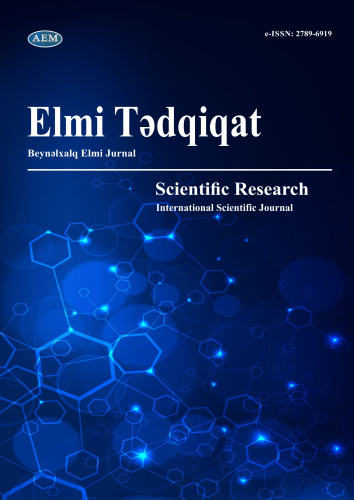https://doi.org/10.36719/2789-6919/38/93-98
Xəyalə Nəsirli
Naxçıvan Dövlət Universiteti
khayala.orujova@mail.ru
Diş tacı qüsurlarının taxmalar vasitəsilə bərpa edilməsi
Xülasə
Diş tacı problemlərini bərpa etmək üçün itirilmiş və ya zədələnmiş dişləri implantlarla əvəz etmək adi bir təcrübədir. Adətən titandan ibarət olan diş implantı diş kökü funksiyasını yerinə yetirmək üçün cərrahi yolla mandibula daxil edilir. Həqiqi dişin görünüşünü və hissini təkrarlamaq üçün implanta möhkəm bir şəkildə sümüyə daxil edildikdən sonra tac yapışdırılır.
Bir çox tac qüsurları, o cümlədən aşınma, travma və ya çürümə nəticəsində yaranan qüsurlar bərpa proseduru zamanı düzəldilə bilər. Davamlılıq, sabitlik və qonşu dişlərin və sümük quruluşunun qorunması diş implantlarının yalnız bir neçə faydasıdır. İmplantlar körpülər kimi dəstək üçün yaxınlıqdakı dişlərdən asılı olmadığı üçün əlavə zədələnmə şansı daha azdır.
Prosedur baxımından terapiya adətən mərhələlərlə aparılır. İmplantasiyadan sonrakı sağalma mərhələsində implant sümüklə birləşir (osseointeqrasiya). İmplant sabitləndikdən sonra onun üstünə xüsusi hazırlanmış tac qoyulur. Rəqəmsal təsvir və 3D çap kimi texnoloji irəliləyişlər tac dizaynı və implant yerləşdirmənin dəqiqliyini artırdığı üçün bərpa işlərinin uğuru artmışdır.
Tac çatışmazlığının implantla bərpası ümumi diş funksiyasını artıran, estetikanı yaxşılaşdıran və ağız sağlamlığını dəstəkləyən uzunmüddətli bir seçimdir. Məqalədə, qeyd olunan konteksdə ətraflı araşdırma aparılmışdır.
Açar sözlər: diş tacı, qüsur, taxma, vasitə, bərpa
Khayala Nasirli
Nakhchivan State University
khayala.orujova@mail.ru
Restoration of Tooth Crown Defects by Means of Implants
Abstract
It is common practice to replace lost or damaged teeth with implants to restore dental crown problems. A dental implant, usually composed of titanium, is surgically inserted into the mandible to function as a tooth root. To replicate the look and feel of a real tooth, a crown is affixed to the implant once it has been firmly incorporated into the bone.
Many crown flaws, including those brought on by wear, trauma, or decay, can be fixed during the restoration procedure. Durability, stability, and the preservation of neighbouring teeth and bone structure are just a few benefits of dental implants. Since implants don't depend on nearby teeth for support like bridges do, there is a lower chance of further damage.
Procedure-wise, the therapy is usually administered in phases. The implant merges with the bone (osseointegration) during the healing phase that follows implantation. A specially manufactured crown is positioned on top of the implant after it is secure. The success of restorations has increased because to technological advancements like digital imaging and 3D printing, which have increased the accuracy of crown design and implant placement.
Implant restoration of crown deficiencies is a long-term option that boosts overall dental function, improves aesthetics, and supports oral health. In the article, a detailed study was conducted in the mentioned context.
Keywords: dental crown, defect, fitting, tool, restoration

